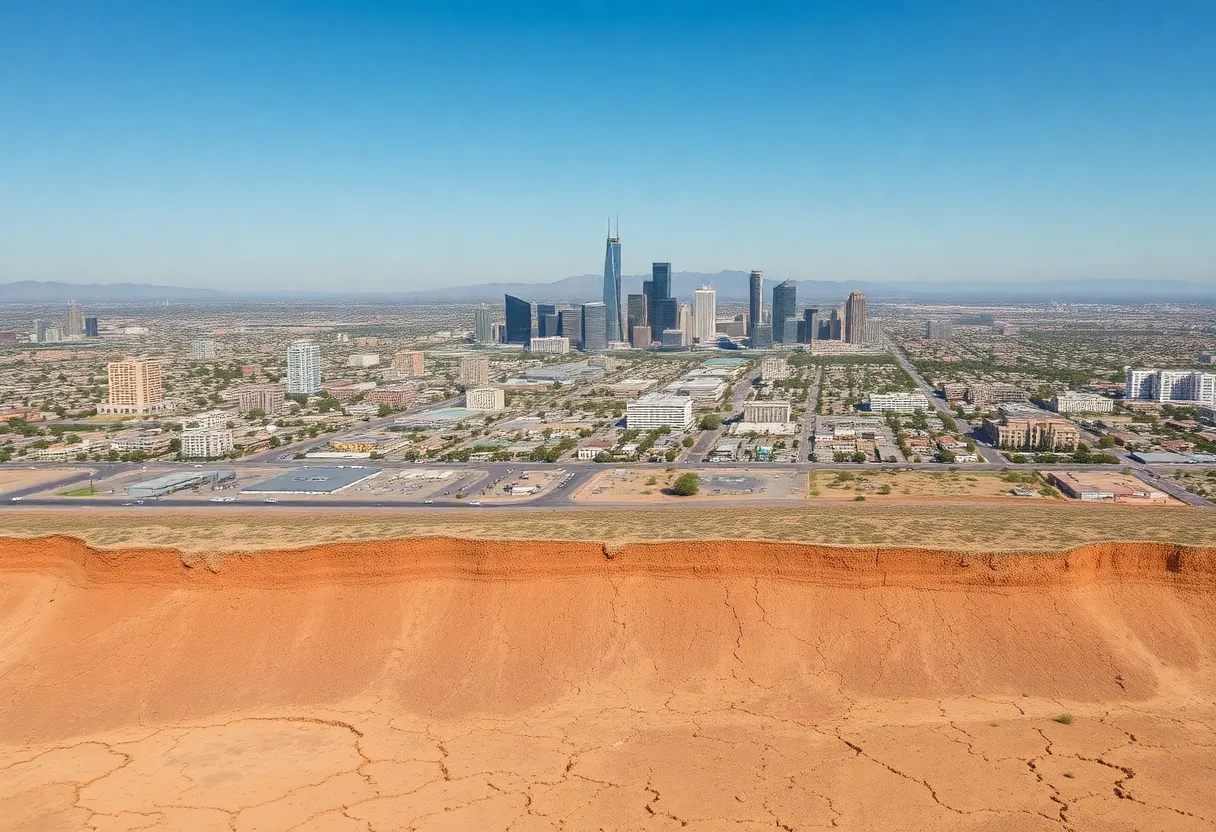News Summary
A recent study reveals that Phoenix is sinking at a rate of one millimeter per year due to excessive groundwater extraction. As population growth increases demand for water, structural stability is compromised, leading to potential damage. The issue extends to 20% of the land in major U.S. cities. Researchers emphasize the need for sustainable groundwater management to prevent further subsidence and infrastructure challenges.
Phoenix – A new study reveals that the city of Phoenix is sinking at a concerning rate of one millimeter per year due to excessive groundwater extraction. This gradual sinking poses risks of widespread damage to the city’s infrastructure, as structural stability becomes compromised over time. The alarming findings indicate that approximately 20% of land in the 28 most populous cities across the United States is experiencing similar subsidence issues.
Researchers pinpoint increased groundwater use as a major contributor to this phenomenon. As Phoenix’s population grows, the demand for water has led to extensive groundwater pumping, which exceeds the natural rate at which underground aquifers can recharge. This imbalance results in the ground above the aquifers sinking when water is excessively extracted. Conversely, the ground can also rise when these reservoirs are adequately refilled, highlighting the dynamic nature of the land’s elevation in response to groundwater levels.
Concerns over subsidence in Phoenix are not new. The issue has persisted for decades, with historical agricultural practices contributing to the depletion of the underground aquifers. Experts warn that the city is approaching a critical juncture where subsidence could exacerbate existing problems, particularly as climate change and growing populations increase demand for water resources. The analysis in the recent report draws from a decade’s worth of data compiled by a researcher specializing in geological studies.
The extent to which land is sinking can vary significantly across different neighborhoods and communities within Phoenix. Areas that depend heavily on groundwater are experiencing more pronounced effects, such as cracks in buildings and uneven flooring, which serve as early indicators of subsidence-related damage. As the weather patterns become more extreme, the risk to infrastructure intensifies, potentially leading to greater repair costs and safety hazards.
Despite advances in technology that allow for monitoring subsidence, challenges persist, especially in rural regions where groundwater extraction remains largely unregulated. For instance, a specific region in Arizona, Wenden, has seen an alarming drop in elevation of up to 18 feet over the span of 80 years because of excessive groundwater depletion. This highlights the critical need for effective management strategies.
While city officials are implementing managed recharge programs aimed at mitigating the impacts of subsidence in urban areas, rural counterparts continue to face significant obstacles in regulating groundwater pumping. Unchecked extraction can lead to decreased aquifer storage capacity, further threatening future water availability. As researchers continue to study subsidence trends, they caution that worsening climate conditions could lead to increased rates of land sinking in the coming years.
The findings of the study were published in the scientific journal Nature Cities and underscore the urgent need for a comprehensive approach to groundwater management. Balancing population demands with sustainable water practices will be crucial for the long-term stability of Phoenix and other cities facing similar challenges.
Deeper Dive: News & Info About This Topic
- KTAR: City of Phoenix is Sinking
- Wikipedia: Subsidence
- AZ Central: Phoenix Sinking Study
- Google Search: Groundwater Subsidence
- New York Times: Sinking Cities
- Google Scholar: Groundwater Pumping Sinking
- KTAR: Mesa Water Conservation
- Encyclopedia Britannica: Water Resources
- 12 News: Arizona Water Wars
- Google News: Sinking in Phoenix

Author: STAFF HERE PHOENIX WRITER
The PHOENIX STAFF WRITER represents the experienced team at HEREPhoenix.com, your go-to source for actionable local news and information in Phoenix, Maricopa County, and beyond. Specializing in "news you can use," we cover essential topics like product reviews for personal and business needs, local business directories, politics, real estate trends, neighborhood insights, and state news affecting the area—with deep expertise drawn from years of dedicated reporting and strong community input, including local press releases and business updates. We deliver top reporting on high-value events such as the Waste Management Phoenix Open, Cactus League Spring Training, and Arizona State Fair. Our coverage extends to key organizations like the Greater Phoenix Chamber of Commerce and Visit Phoenix, plus leading businesses in technology and healthcare that power the local economy such as Intel and Banner Health. As part of the broader HERE network, including HERETucson.com, we provide comprehensive, credible insights into Arizona's dynamic landscape.





